
(a)
Interpretation: The product formation in the given example of Cope rearrangement of
Concept Introduction:
Cope-rearrangement:
It is a pericyclic reaction that involves the redistribution of six electrons through the formation of a cyclic transition state from which a
Example with mechanism of cope-arrangement:
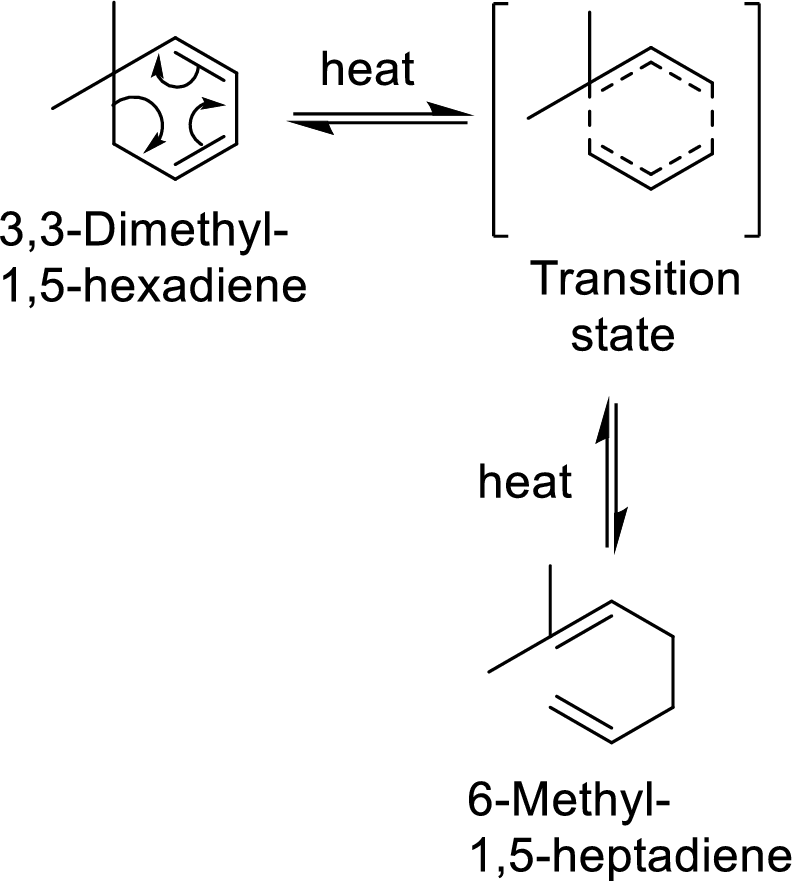
In this mechanism, two pi-bonds and one sigma bond of the reactant molecule has been rearranged and formed two new pi-bonds through a cyclic transition state.
Identification of cope-rearrangement in a
In the cope-rearrangement, the flow of electrons takes place between six bonds that are bonded as
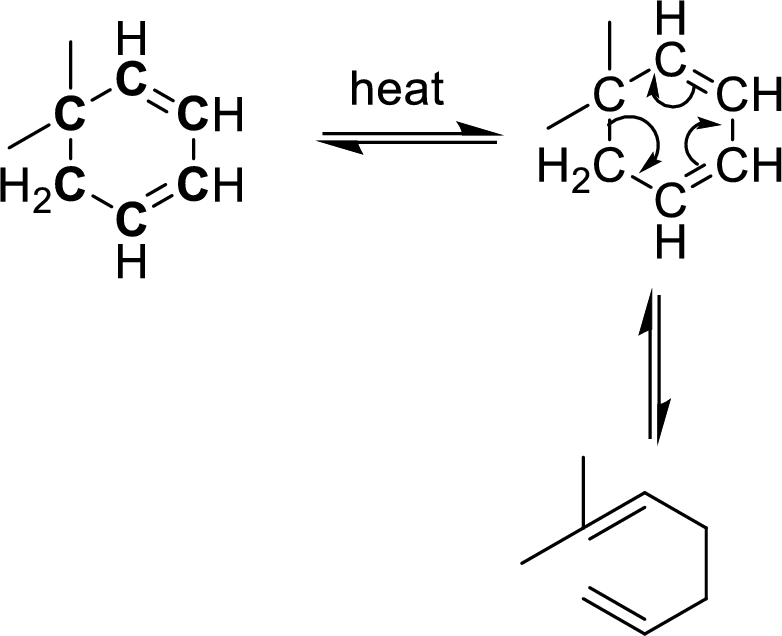
The carbon atoms that are involving in the cope-rearrangement are shown in bold.
(b)
Interpretation: The product formation in the given example of Cope rearrangement of
Concept Introduction:
Cope-rearrangement:
It is a pericyclic reaction that involves the redistribution of six electrons through the formation of a cyclic transition state from which a
Example with mechanism of cope-arrangement:
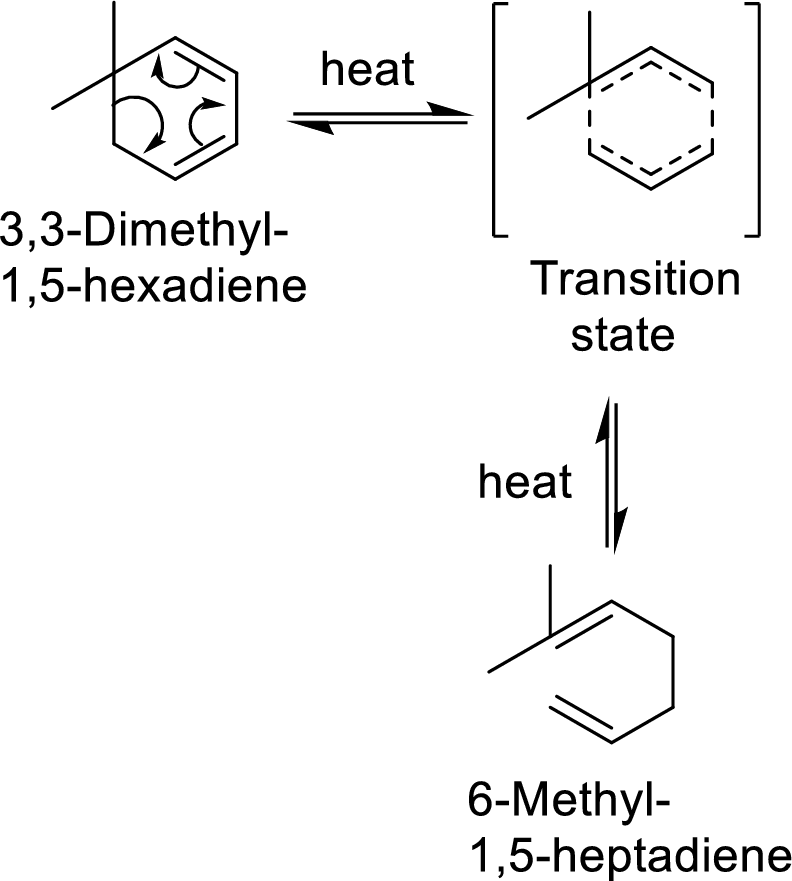
In this mechanism, two pi-bonds and one sigma bond of the reactant molecule has been rearranged and formed two new pi-bonds through a cyclic transition state.
Identification of cope-rearrangement in a
In the cope-rearrangement, the flow of electrons takes place between six bonds that are bonded as

The carbon atoms that are involving in the cope-rearrangement are shown in bold.
(c)
Interpretation: The product formation in the given example of Cope rearrangement of
Concept Introduction:
Cope-rearrangement:
It is a pericyclic reaction that involves the redistribution of six electrons through the formation of a cyclic transition state from which a
Example with mechanism of cope-arrangement:
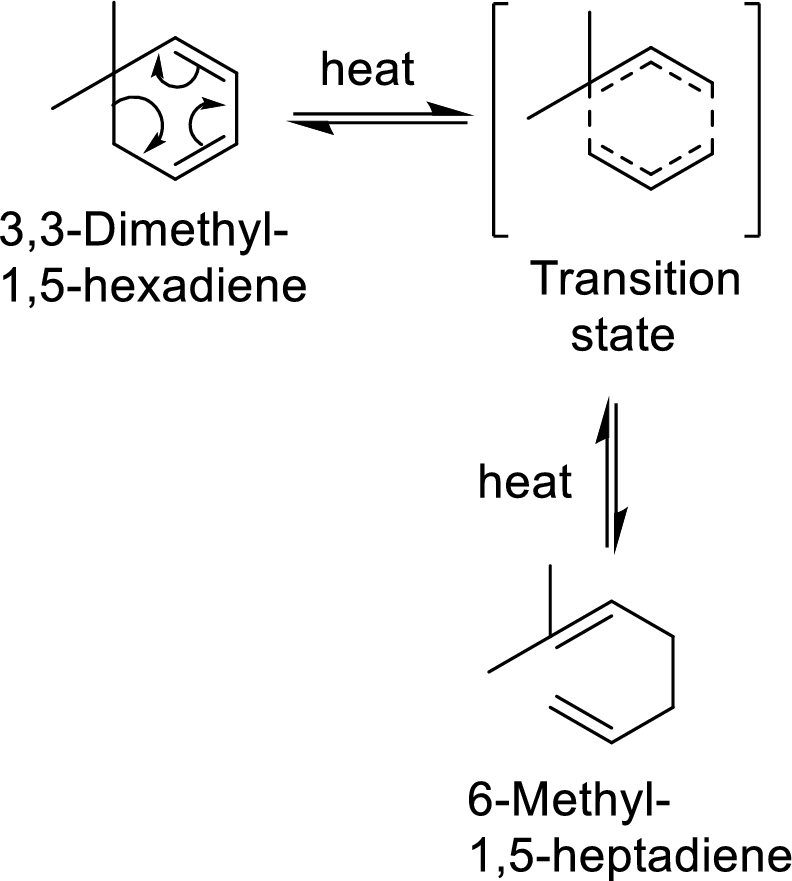
In this mechanism, two pi-bonds and one sigma bond of the reactant molecule has been rearranged and formed two new pi-bonds through a cyclic transition state.
Identification of cope-rearrangement in a
In the cope-rearrangement, the flow of electrons takes place between six bonds that are bonded as
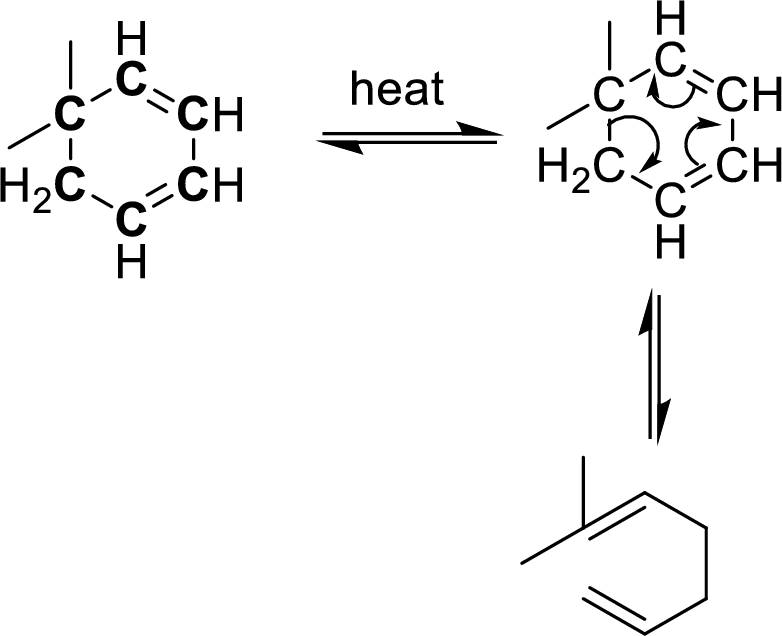
The carbon atoms that are involving in the cope-rearrangement are shown in bold.
Want to see the full answer?
Check out a sample textbook solution
Chapter 20 Solutions
Organic Chemistry
- Bicyclo-2,5-heptadiene can be prepared in two steps from cyclopentadiene and vinyl chloride. Provide a mechanism for each step.arrow_forwardAll rearrangements we have discussed so far have involved generation of an electron-deficient carbon followed by a 1,2-shift of an atom or a group of atoms from an adjacent atom to the electron-deficient carbon. Rearrangements by a 1,2-shift can also occur following the generation of an electron-deficient oxygen. Propose a mechanism for the acid-catalyzed rearrangement of cumene hydroperoxide to phenol and acetone.arrow_forwardConsider the monosubstituted benzene reagent X. Nitration of X yields product Y. Product Y is analysed by 1H and 13C NMR spectroscopy (see Figures 1 to 4). Determine the structure of X and Y on the basis of the spectral data provided.arrow_forward
- Synthesize 1-methyl-2-propylcyclohexane from any hydrocarbon with no more than seven carbons. Provide all reagents. You may show all intermediates for more credit.arrow_forwardWith POCl3, If dehydration is not possible, a substitution can occur instead. Provide a mechanism to account for the formation of this compound. Be sure that your steps are as simple as possible and conform to the conditions of the reaction.arrow_forwardWhen 1 mole of buta-1,3-diene reacts with 1 mole of HBr, both 3-bromobut-1-ene and 1-bromobut-2-ene are formed. Propose a mechanism to account for this mixture of products.arrow_forward
- The Wittig reaction can be used for the synthesis of conjugated dienes, as, for example, 1-phenyl-1,3-pentadiene. -CH=CHCH CHCH, 1-Phenyl-1,3-pentadiene Propose two sets of reagents that might be combined in a Wittig reaction to give this conjugated diene.arrow_forwardElimination of HBr from 2-bromobutane affords a mixture of 1-butene and 2-butene. With sodium ethoxide as base, 2-butene constitutes 81% of the alkene products, but with potassium tert-butoxide, 2-butene constitutes only 67% of the alkene products. Offer an explanation for this difference.arrow_forwardOn treatment with HBr, 3-Methyl-1-pentene undergoes addition and rearrangement to yield 3-Bromo-3-methylpentenearrow_forward
- The following reaction was performed as part of a research program sponsored by the National Institutes of Health to develop therapeutic agents for the treatment of cocaine addiction. Using what you have seen about the reactions of halogens with alkenes, propose a mechanism for this process.arrow_forward1. Methylene cyclohexane, on treatment with strong acid, isomerises to yield methyl cyclohexene. Propose a mechanism by which the reaction might occur.arrow_forwardIllustrate the mechanism of forming alkynes from a 1,2-dihalide and a vinylic halide. Show intermediates as applicable and use the arrow formalisms.arrow_forward

 Organic ChemistryChemistryISBN:9781305580350Author:William H. Brown, Brent L. Iverson, Eric Anslyn, Christopher S. FootePublisher:Cengage Learning
Organic ChemistryChemistryISBN:9781305580350Author:William H. Brown, Brent L. Iverson, Eric Anslyn, Christopher S. FootePublisher:Cengage Learning

